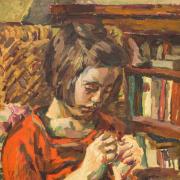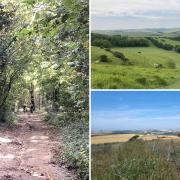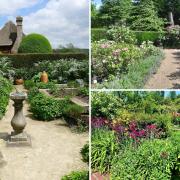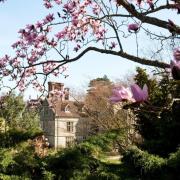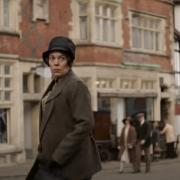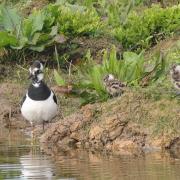Catherine Forshall has spent a lot of time in the shadow of the South Downs, near Iping, and lists Sussex as one of her primary sources of inspiration.
“I don’t know if I always wanted to be an artist,” says Catherine Forshall of what is now her life’s passion. “I think you just paint because you love it and need to do it and then one day you wake up and you are an artist.” Brought up on the west coast of Scotland, Catherine has been drawing and painting for as long as she can remember. “My mother encouraged me to go and study art in Florence under Nerina Simi, when I was 16. It was such an inspiring place to be – you are surrounded by wonderful art and it is almost as if you breathe it in.”
Catherine found the teaching there very different from what she had experienced back in Britain. “The art was very disciplined, very academic but I really enjoyed my year of life drawing and occasionally still life. We were not allowed to touch colour until the end of the first year. I think that drawing is important.”
When asked to give a piece of advice to other aspiring young artists, she says simply: “Listen to your heart and work. Just keep on working. There will be highs and lows. I know that it’s been said before but art is 10 per cent inspiration and 90 per cent perspiration.”
When looking for her own inspiration, it is the work of Ivon Hitchens that she admires the most. “I love his views where you glimpse the Downs through the trees. I think however that my main inspiration is natural beauty. For years I have loved marine subjects and recently I have been going back to wild flowers. The fact that we are destroying these things makes them all the more precious and inspiring. It’s a personal view, and not at all fashionable, but I think that good art comes from the heart and I think it often shows tenderness and love.”
Through her work with wild flowers, Catherine has collaborated with Plantlife, a charity which celebrates the beauty of wild flowers, “and shows how this natural heritage is in danger of being lost, and how we can protect their future. It draws attention to roadside verges and why they are so important and how they are the life-giving arteries of the countryside. Somehow I feel they give hope for the future.”
This year the charity has planted coronation meadows, part of a coronation anniversary campaign to restore the UK’s threatened wild flowers. These are outstanding examples of flower-rich grasslands, surviving fragments that support our wildlife. There are two in Sussex – Coach Road Field and Triangle Field, both in Battle.
Catherine’s husband was brought up in Sussex, and his family have lived here for three generations, not far from where Ivon Hitchens lived. “I had a spell living here at one point when we were looking for a house and we spent many happy weekends and holidays. The house nestles under the South Downs, with wonderful views and I have always wanted to paint on the Downs and catch the light and the changing colours of the seasons.” She goes on to say that her children have a strong association with this part of the world, as some of her husband’s family still live here. Catherine often exhibits her work at the Moncrieff-Bray Gallery, near Petworth, “it is such a quintessentially Sussex location, this wonderful Sussex barn with its views over the Rother Valley.”
Catherine’s current exhibition is at the Moncrieff-Bray Gallery, near Petworth, running throughout November and December. She says of the work on display: “There is a mixture of new wild flower paintings which have never been shown before, that I did in France this summer, and recent marine works of fish and shells.”








